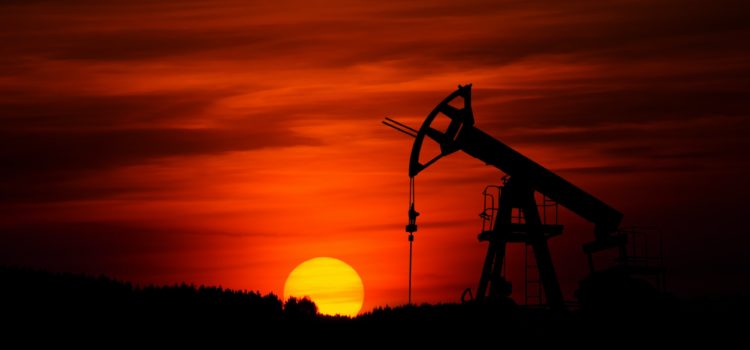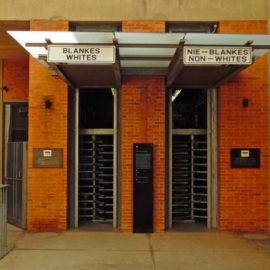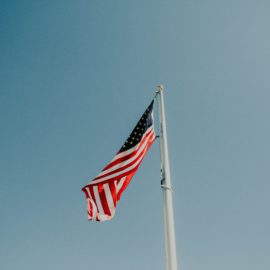

This article is an excerpt from the Shortform book guide to "A Promised Land" by Barack Obama. Shortform has the world's best summaries and analyses of books you should be reading.
Like this article? Sign up for a free trial here .
How did the Obama administration handle the BP oil spill? How did the disaster in the Gulf affect his presidency?
During the Obama administration, the BP oil spill occurred. It was one of the largest maritime disasters in history, and was a substantial crisis for the Obama administration.
Read more about the Obama administration and the BP oil spill.
Obama Administration and the BP Oil Spill: Crisis in the Gulf
Just as the fight for the Dodd-Frank bill was heating up and the dust was settling from the battle for the Affordable Care Act, the Obama administration would face one of its gravest political crises. On April 20, 2010, the Deepwater Horizon deep-sea oil rig exploded in the Gulf of Mexico off the coast of Louisiana after the engineers ignored the results of a safety test. The fiery explosion injured 17 members of the crew, killed 11, and set off the largest oil spill in maritime history.
For years, energy companies like British Petroleum (BP)—the company on whose behalf Deepwater Horizon was operating—had been conducting deep-sea drilling for petroleum. This involved drilling beneath the ocean’s floor, sometimes as much as 35,000 feet. Such operations were highly risky and expensive, but could also be enormously profitable for the oil companies.
The humanitarian and environmental horror of the explosion captured the world’s attention and suddenly made it the No. 1 issue for the administration. The event had the effect of shining a spotlight on just how great a humanitarian and environmental price society paid for its dependence on fossil fuels.
No Action on Climate Change
Unfortunately, the situation in the Gulf was also the death knell for the administration’s climate change bill. As a “sweetener” to get Republicans and wavering Democrats from oil- and coal-producing states on board with the bill, Obama had authorized more offshore drilling. Environmental groups had grumbled, but agreed to go along if it was the necessary price for a comprehensive bill.
The Deepwater Horizon spill completely changed the political calculus. In the wake of the catastrophe, there was little public appetite for more drilling and environmental groups would no longer support any deal that included it. And indeed, after the spill, the administration had little choice but to impose a six-month moratorium on all deepwater offshore drilling.
The moratorium, however, gave Republican Lindsey Graham (who was already lukewarm about the bill to begin with) the perfect excuse to walk away from the bipartisan climate change bill he’d been working on with the administration. Legislative action on climate change was dead.
Leading the Response
The Obama administration wanted to ensure that the response to the crisis was timely and effective in delivering relief to the millions of affected individuals and businesses in the Gulf. Under current law, BP was obliged to pay for the cleanup of the spill itself. However, they had limited liability when it came to compensating affected businesses like commercial fisheries and resorts that relied on a tourism sector that would no doubt be devastated.
Obama instructed his Secretary of the Interior, Ken Salazar, that he wanted a firm commitment from BP that they would bear the costs of making whole those whose livelihoods they’d ruined through their neglect and incompetence. The president then tasked Senior Adviser Valerie Jarrett with coordinating the interagency federal response between the EPA, Department of the Interior, Department of Energy, and other agencies and departments. Crucially, she was also in charge of liaising with leaders and officials in the impacted states—all of which had Republican governors.
The Impact of the Spill
Initially, BP executives told the public that the explosion had not resulted in any significant dispersal of oil. However, these claims were proven false within days. Engineers discovered major breaks in the underwater pipelines. Initial estimates calculated that approximately 5,000 barrels of oil per day were gushing out, with the company having no idea how to repair the pipelines and stop the leak.
The world watched in abject horror and disgust as a massive surface oil slick spread across the Gulf of Mexico, ultimately spanning over 600 square miles. The administration’s top scientists and engineers feared that 19 million gallons could be dumped into the Gulf—an ecological death sentence for the region.
Watching the crisis unfold, Obama saw how reckless commercial activity had wrought a devastating impact on the region, with Louisiana alone losing 10,000 acres of land annually due to climate change and erosion. Despite humankind’s hubris, Obama solemnly observed, we were still largely at the mercy of nature.
“Obama’s Katrina”
As the crisis wore in through the spring and summer, the political mood turned sour for the president and his party. The situation in the Gulf exacerbated the administration’s existing problems with a polarized and ineffective Congress and a stubbornly slow economic recovery that still featured sky-high unemployment.
Although the public had initially (and in Obama’s view, correctly) blamed BP for the spill, that began to change the longer the leak continued with no clear end in sight. Now, the public was directing its ire at the administration that had failed to prevent the leak and seemed unable to fix it.
The public relations situation got worse when BP installed a camera at the site of the leak, enabling billions of people around the world to see live images of dark, viscous oil being pumped into the Gulf of Mexico, complete with a digital timer showing precisely how long the leak had been going on. Nightly news images of vast oil slicks on beaches and tar-drenched pelicans and fish shocked and outraged the nation, with political commentators labeling the oil spill “Obama’s Katrina.”
Regulatory Capture at MMS
The administration’s reputation was further damaged when revelations came to light about misconduct at the Minerals Management Service (MMS), the agency within the U.S. Department of the Interior that was responsible for regulating the nation’s oil and gas.
Reports showed that the MMS had enjoyed a far too friendly relationship with the industry that it was meant to be overseeing, with a revolving door between the agency and the oil and gas companies. There were even revelations of sexual relationships between regulators and executives at these companies. Clearly, MMS was more of a lapdog than a watchdog.
While the coverage was undoubtedly embarrassing and cast a stain on his administration’s handling of the crisis, Obama believed that the issues at MMS had deeper roots and spoke to larger issues in American politics. Since the election of Ronald Reagan in 1980, the conservative movement had convinced large numbers of Americans that government was the root of all the nation’s problems. If we could just “get government off our backs,” we would be a more free, prosperous, and happy society.
Obama believed that this had let voters into a self-destructive feedback loop in which:
- The public enthusiastically voted for politicians who promised to slash regulations on business and cut funding for agencies like MMS tasked with enforcing public safety.
- Understaffed and underfunded agencies lacked the resources to properly enforce safety regulations, leading to events like the Deepwater Horizon explosion.
- The failure of the government to prevent these disasters affirmed voters and politicians in their belief that the problem lay with government—and, therefore, the only solution was to further reduce its role by voting for more right-wing politicians.
He found it especially galling to be attacked by anti-regulatory, anti-environmental Republican politicians like Louisiana Governor Bobby Jindal, whose entire approach to public policy made it near-impossible to solve problems like the oil spill.
Plugging the Leak
In the end, however, the administration managed to lead an effective and competent response to the spill. The federal government had an open communication strategy that kept the public informed as to the latest developments in the Gulf. The president even took the time to address the nation from the Oval Office on the severity of the situation.
And the administration proved serious about its commitment to holding BP accountable. After White House Chief of Staff Rahm Emanuel applied intense political pressure on the company, they agreed to set up a $20 billion relief fund for the fishing, tourism, and recreation businesses decimated by the spill.
Finally, engineers from the U.S. Department of Energy managed to cap the well on July 15. Although this was a great relief and finally brought the national nightmare to an end, the damage done was catastrophic. The undersea well had leaked an astonishing four million barrels of oil into the Gulf over a period of 87 days.

———End of Preview———
Like what you just read? Read the rest of the world's best book summary and analysis of Barack Obama's "A Promised Land" at Shortform .
Here's what you'll find in our full A Promised Land summary :
- How Barack Obama went from relative obscurity to the first Black president
- What principles guided his political leadership style
- Why Obama retained an unshakable faith in the potential and promise of America






